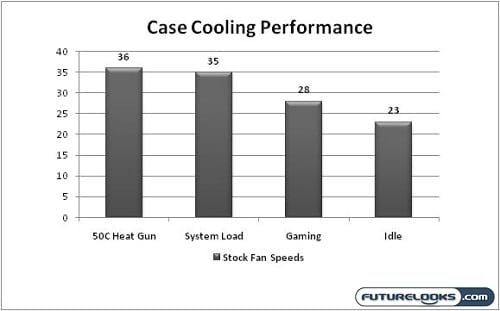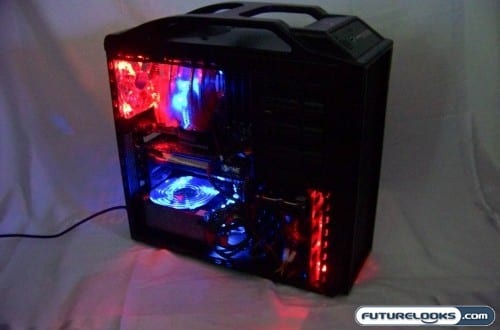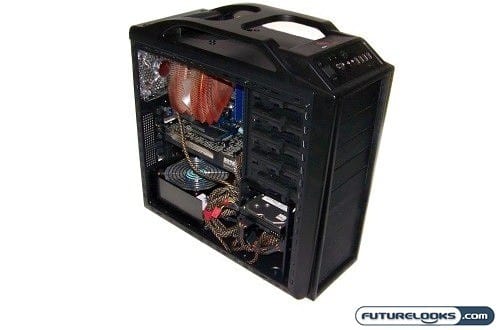The Objective: Cool the System Efficiently!
With an ambient temperature of 22c we proceed to our target objective. The test system was allowed to idle for an hour before the exercise began. Once the reading was taken, a bit of light system use like gaming ensued to see if there was any noticeable variation in temps during typical use. Next, the computer was put through a full 100% load.

It took some time before the internal temp hit 28 C under gaming. The fact that the video card expels air out the back helps greatly. Full load pushed the internal temp to 35 C mainly due to the extreme load placed on the quad core I7 processor and heat given off by the video card’s PCB. The enclosure had no problems handling my patented 50 C heat gun test as well. While the gun was billowing hot air in to the chassis, the fans brought the internal temperature back down to 36 C at its highest point. This more than proves that the Scout can handle cooling anything you can put in it. Also, the case fans remained extremely quiet the entire time which was really nice.
Final Thoughts

There’s a lot about the Cooler Master Scout that simply makes it a great computer case. Let’s cover the things that could use a quick touch up.
First, it would really be awesome if the chassis included another cut out just to the top right of the motherboard tray for a 24-pin PSU main power connector. Second, the PCI clips could use a little beefing up to handle the abuse they’ll undoubtedly be put through. And third, we’re going to need another 1/2 inch or so to allow these “aircraft carrier” video cards the room they need for a successful installation. While most computer enclosure companies continue to create much of the the same thing, the Scout offers a very unique, aggressive, yet attractive design that incorporates an integrated handle feature that actually works. Some of those aggressive features include its black steel chassis, stronger tooless hardware, larger cooling fans, wire management, and extra USB ports.
The Scout sets one strong precedent with its new “Storm Guard Security System” and CPU back plate access. Even though the SGSS is nothing more than a PCI bracket, it does keep your gaming peripherals from being disconnected without opening the chassis. The back plate access through the motherboard tray should absolutely be an industry wide standard. It’s a simple and cheap modification that shouldn’t affect costs. One of the best features of the Scout is obviously the price.
The Scout is scheduled to weigh in at about the $100 to $110 level. Shooting for this mile long target price and hoping to secure it is an especially difficult shot. Judging by the spotter’s reaction, the Scout hit it!
Pros
- Unique case design
- Great overall theme
- Innovative motherboard tray
- Black chassis
- Lightweight for its materials
- Wire management
- Great cooling performance
Cons
- Could use another hole for 24-pin main cable
- PCI clips need some beefing up
- Very tight fit for the largest video cards
Overall Rating: 9.0 / 10.0

Help us improve our reviews! Leave a comment below!

